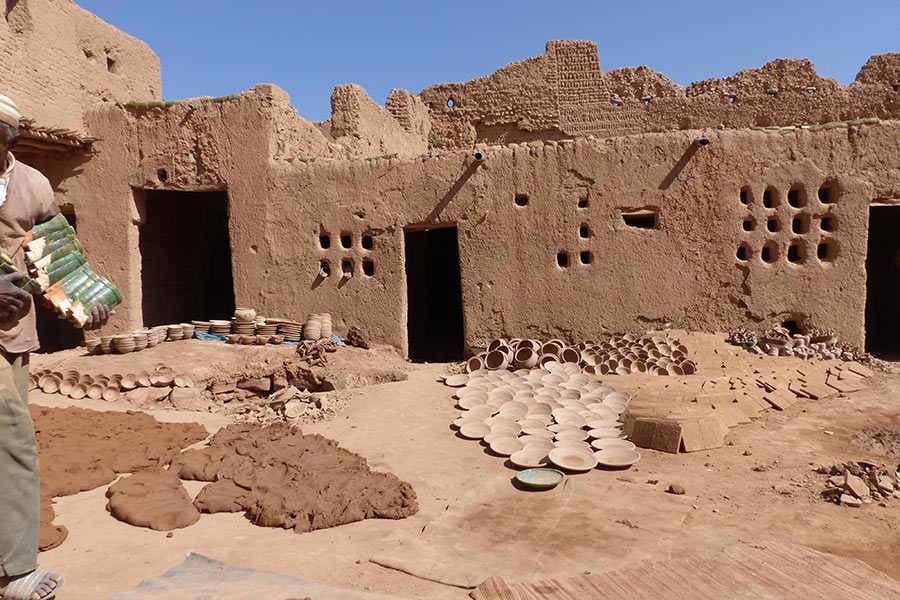Morocco, the country and its special culture
Size: over 445,000 km2
Population: 35 million
Capital: Rabat
Religion: Islam (98%)
National language: Darischa (Moroccan Arabic), various Berber languages such as:
Tamazight in the Middle Atlas, Ghomara, Tarfit in the Rif Mountains, Taschelhit in Southern Morocco
Foreign languages: French, Spanish and English
Morocco – country and people
98% of the Moroccan population are Muslim, about 1% Christian and 0.2% Jewish.
In popular religion, the belief in spirits is deeply rooted, it is the legacy of the pre-Islamic Berbers. The Berbers are the original inhabitants of Morocco. Today, about 45% Berber live in Morocco, 21% Arabized Berbers, about 44% are of Arabian descent.
Moroccans are generaly very tolerant in their religious practice. However, non-Muslims are not allowed to enter mosques, except for the Hassan II Mosque in Casablanca. Permissive clothing is not welcome in Islamic countries and Morocco. It is recommended as a sign of respect not to stroll in hot pants, mini skirt and belly free in public. In the larger cities and in hotels, this is not considered as strict, but in rural areas you should pay attention to this dress code.
The exchange of caresses in public and lewd behavior are frowned upon.
Extramarital relations and homosexuality are prohibited by law. Moroccan men greet each other very warmly. This is not a sign of homosexuality, but the Moroccan culture.
During Ramadan, the Moroccans fast during the day. Therefore, restrictions and changes in the usual daily routine may occur during this time, e.g. closed restaurants, shops and deserted streets during the day. On the other hand, everyone rushes out at dusk to break fast with the call of muezins. The hotels and our tours are mostly unaffected. Ramadan, like our Easter, is not a fixed date. The date for Ramadan in the corresponding year can be found on the Internet.
Morocco is a constitutional monarchy. The king is very highly regarded. Insults to the king or monarchy can have legal consequences. The Moroccans are generally very hospitable and open people.
Typical Moroccan food and drinks
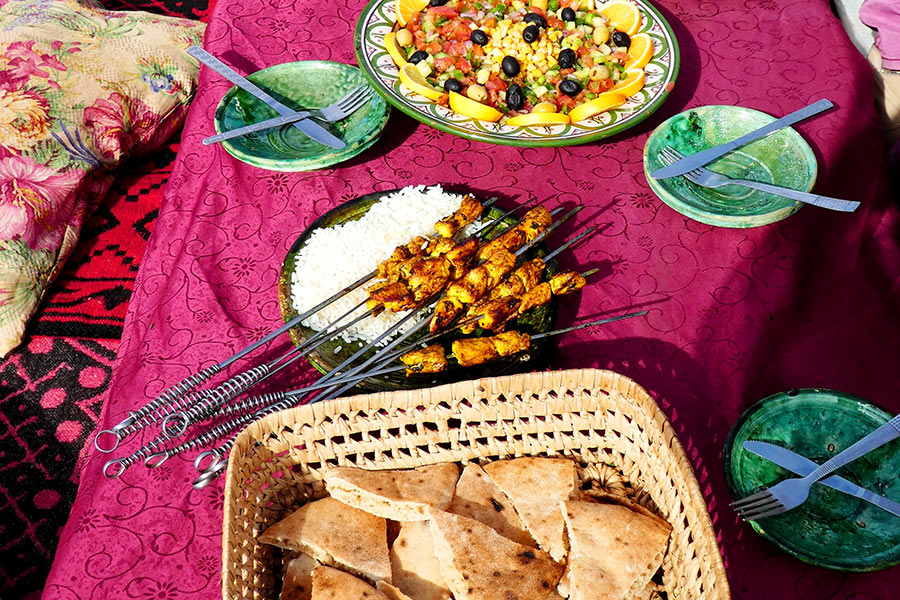 The food in Morocco is very diverse. … but there is no fast food!
The countless sun-ripened vegetables combined with beef, lamb, goat and poultry are refined with oriental spices. Those are served as fresh ingredients for the typical Moroccan dishes of tajine and couscous. Tajine is a kind of stew with fish or meat and vegetables cooked in a clay pot. Couscous is made from durum wheat semolina.
The food in Morocco is very diverse. … but there is no fast food!
The countless sun-ripened vegetables combined with beef, lamb, goat and poultry are refined with oriental spices. Those are served as fresh ingredients for the typical Moroccan dishes of tajine and couscous. Tajine is a kind of stew with fish or meat and vegetables cooked in a clay pot. Couscous is made from durum wheat semolina.
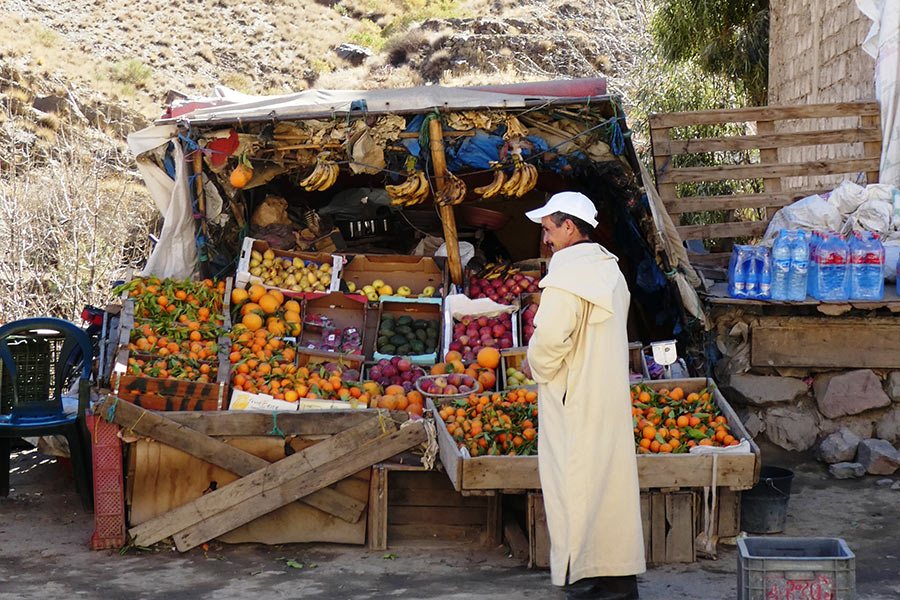 There will always be bread with every meal. Moroccans, like other Arab people, like to eat by hand (the right one) and use a piece of bread as an aid.
There will always be bread with every meal. Moroccans, like other Arab people, like to eat by hand (the right one) and use a piece of bread as an aid.
Harira is the Moroccan soup made from beans, lentils, chickpeas, both with and without meat, which can be found on every menu.
The typical Moroccan salad consists of cucumber, tomato and onion, which by the way, is very tasty!
In the coastal areas there is a lot of fresh fish, also octopus and crab or fresh grilled sardines.
Vegetarians also get their share. Tasty vegetables, gently prepared with spices and exceptional ingredients such as dates, figs and prunes give the dishes the typical oriental flavor.
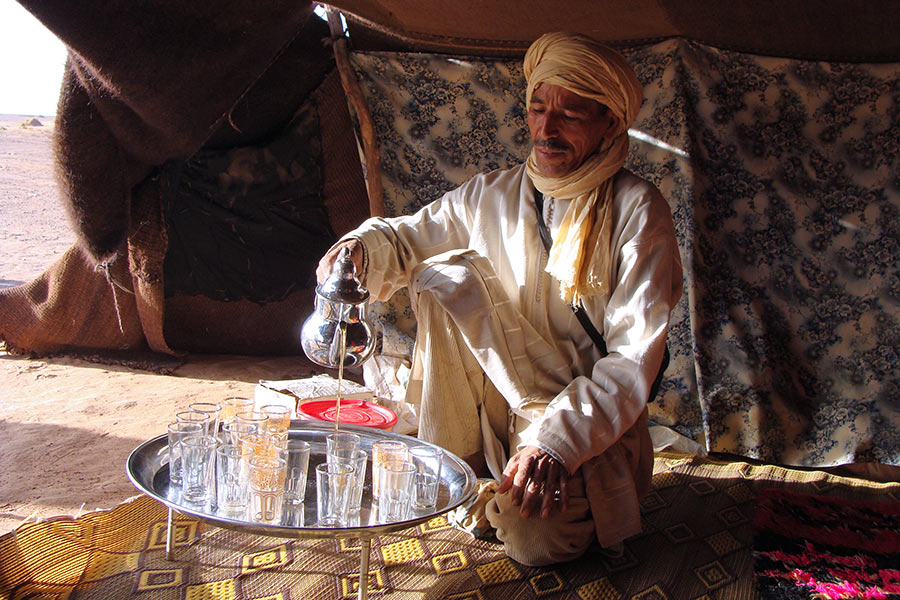
Coffee and tea – are the most popular drinks. Drinking tea in Morocco is like a ceremony. “Thé à la menthe” is jokingly called by the locals the “Moroccan whisky”, because the tea after a long brewing time resembles the color of whisky.
Alcohol is not common. You can get alcoholic drinks in a few large supermarkets in the cities and in hotel bars.
Traditional craftsmanship
Morocco is famous around the world for its creative and skilled craftspeople.
The beautiful products of the workshops can be obtained in the souks of the cities of Marrakech, Fès, Ouarzazate, Essaouira and many other places.
On the tours with Caravane de Rêve you will be able to visit some of these workshops and buy their products.
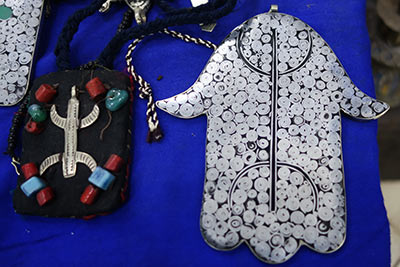
There are silversmiths who make the traditional Berber jewelry. Silver, fibulae, rings, necklaces and bracelets are processed. In the streets of the medina there are the quarters of the metal processing guilds. Here you will find beautiful lanterns, finely chiselled brass plates and filigree punched lamps made of various metals.
Carpenters master the high art of inlay. From the native wood species such as thuja and cedar, from the Atlas mountains, tamarisk from the desert areas.
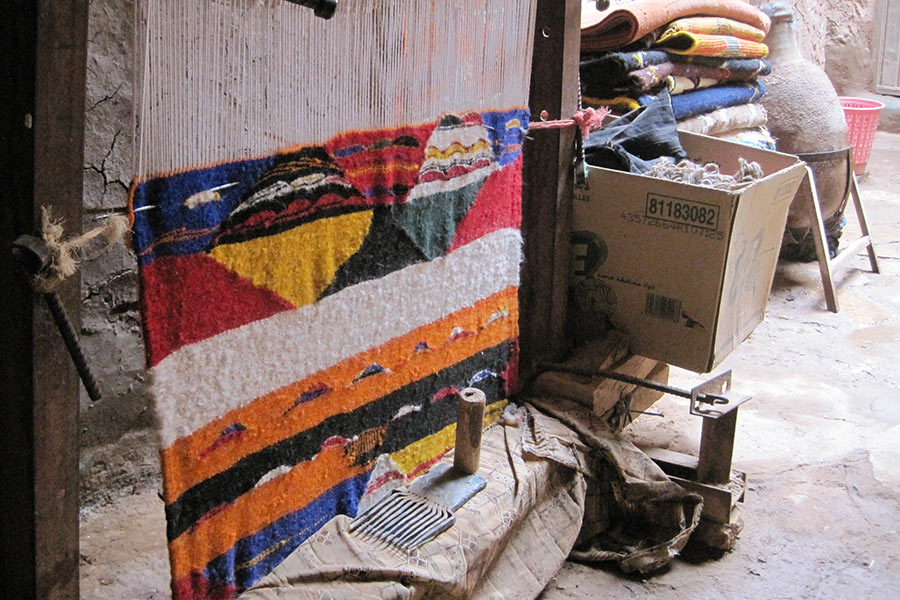
Carpets are mainly made by women by hand over many months. They are often organized in cooperatives.
For dyeing only natural products are used. The wool is predominantly dyed with the natural pigments of saffron, henna, mint and indigo. Very popular are also the so-called Glaoui rugs with their traditional motifs and the Aknif rugs, which can be rolled up thinly. Knotted carpets are much heavier, but also last longer.
Tanning in Morocco is still very traditional. In the tanneries pigeon droppings and lime are in use for tanning and it is all done by hand. The leather is dyed with natural colors, such as saffron, mint, indigo and henna. Likewise the cactus silk for embroidering.
Pottery – The typical ceramic products are vases, bowls in every size and pots for the garden and of course the well-known Tajine cookware. In the Moroccan potteries, the techniques are passed on in families for generations. In many communities, several families have formed cooperatives.
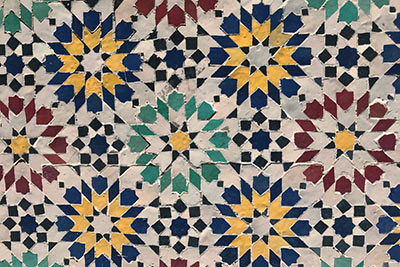
Argan oil extraction – 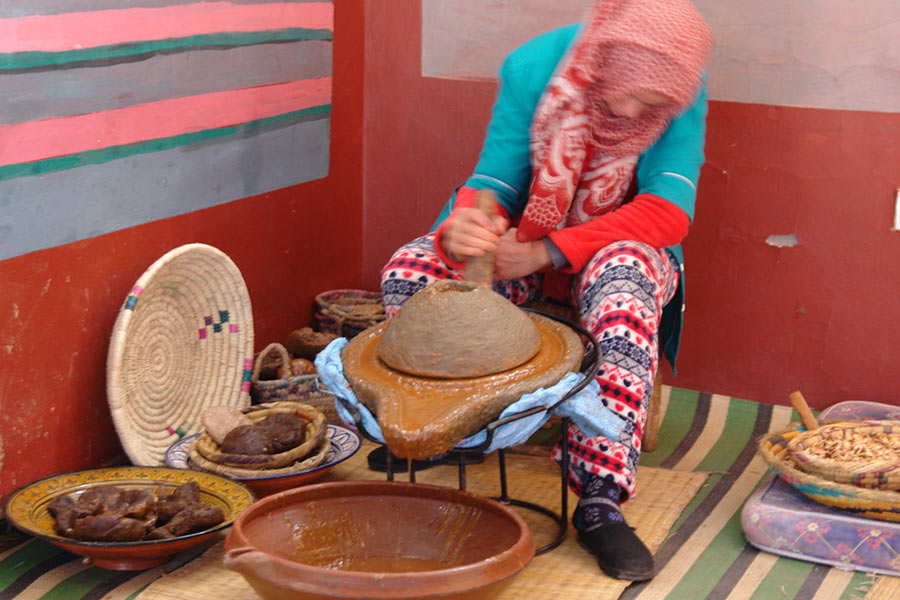
The argan tree (Arganium Spinosa) is endemic to Morocco and grows in the coastal region in south-western Morocco up to 100 km inland. The trees grow wild and rely on the coastal fog to thrive. The nuts are harvested and then brought to the Atlas Mountains to the women’s cooperatives.
These cooperatives help women earn their own income.
Home » Information & Travel Tips »

